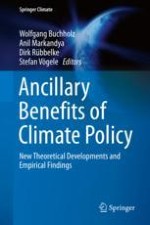2020 | OriginalPaper | Buchkapitel
Health Co-benefits of Climate Mitigation Policies: Why Is It So Hard to Convince Policy-Makers of Them and What Can Be Done to Change That?
verfasst von : Anil Markandya, Jon Sampedro
Erschienen in: Ancillary Benefits of Climate Policy
Aktivieren Sie unsere intelligente Suche, um passende Fachinhalte oder Patente zu finden.
Wählen Sie Textabschnitte aus um mit Künstlicher Intelligenz passenden Patente zu finden. powered by
Markieren Sie Textabschnitte, um KI-gestützt weitere passende Inhalte zu finden. powered by
